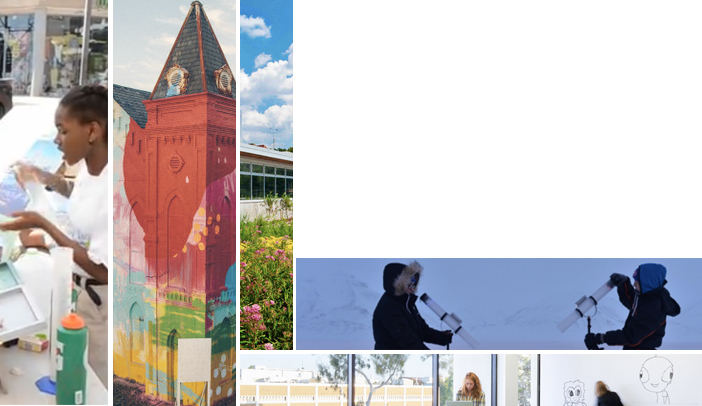Gensler on types of urban interface. Manaugh looks at Arctic instruments. Preservation Nation features church like no other. Earth day with Ayers Saint Gross and Living Classrooms. The Dirt shows the power of flowers.

Urban interface. Sarah Mathieson, an architectural assistant from the Gensler London office, discusses how the London office explored how education campuses interact with their immediate surroundings, or what they call the Urban Interface, as part of the Education Practice Area Next Gen Initiative.
The group identified a series of Urban Interface typologies that define these current and future campus trends:
- Suburban/Rural: Has dedicated facilities separated from the surrounding environment, allowing for multiple interactions between educators and students; establishes a clear institutional identity but offers less real estate flexibility and less accessibility if the student is off campus.
- Urban Cluster: Offers real estate flexibility, allowing for interaction with educators and accessibility both on and off campus. As students are more dispersed, however, interactions between them are fewer, and the sense of institutional identity isn’t as strong.
- Urban: Has dedicated facilities allowing for interactions between educators and students and is accessible on and off campus, as it is based in the community. It offers less real estate flexibility.
- Virtual: Possesses no real estate but is accessible from anywhere. As the institutional identity is digital, it is thus not part of the greater community.
- Global: Real estate accessible in multiple locations exports the institutional identity and allows for interactions between educators and students. This reach could be seen as diluting the offer (exclusivity).
Via Gensleron Cities
Arctic instruments. Geoff Manaugh writes about at a trip students from the University of Lund School of Architecture took to the Arctic island of Svalbard last autumn led by David Garcia.
Students flew up to visit "the far north, beyond the Polar Circle, to Svalbard, to study the growing communities affected by the melting ice cap and the large opportunities for transportation and resources that the northeast passage now offers," researching first-hand the "urban structures in the extreme cold" with Arctic instruments.
Via BLDG Blog
Historic church gets mural makeover. Graffiti artist Alex Brewer, also known as HENSE, took to Washington, D.C.’s city streets last year to transform an abandoned, historic church into a work of art.
In several weeks, HENSE dove into his imagination and conjured up the beautiful, vibrant mural that now envelopes the church.
“Most of the tools I use in my murals and paintings are the same tools I learned to use by working in the street in the early years. I use rollers, brushes, spray paint, inks, acrylics, mops, enamels, paint sprayers and other various mediums and tools… Recently I've been experimenting in treating my exterior works similarly to my paintings.”
Living classrooms. In honor of Earth Day, 14 volunteers from Ayers Saint Gross had the unique opportunity to help build 23 floating wetlands that will be planted and launched into the Inner Harbor in Baltimore, Maryland, on April 20..
Spearheaded by Living Classrooms and Biohabitats, the project will support the city of Baltimore’s effort to make The Harbor swimmable, healthy and fishable by 2020.
Flower power. Tyler Silvestro, a master’s of landscape architecture candidate at the City College of New York (CUNY), examines the Center for Sustainable Landscapes (CSL), one of the Earth’s greenest buildings and the latest addition to the Phipps Conservatory and Botanical Gardens of Pittsburgh, Pennsylvania.
Richard Piacentini, executive director of Phipps Conservatory and Botanical Gardens, says the primary drive behind the Center for Sustainable Landscapes is to function “as elegantly and efficiently as a flower.” While the merits of this approach can be questioned, the pure essentials of this poetic gesture are there.
Via The Dirt



